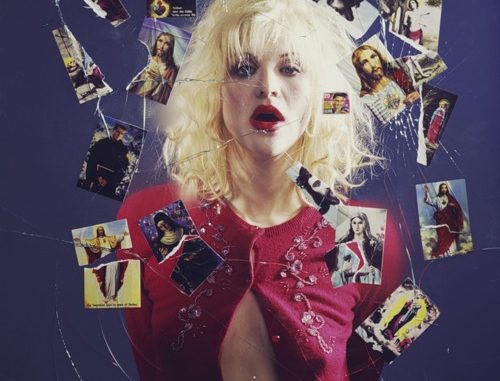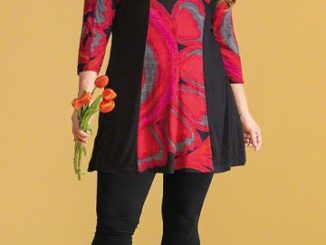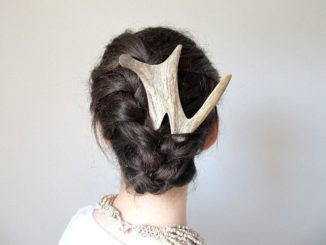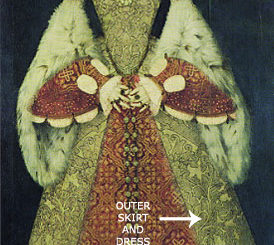
Riot Grrrl fashion shaped and influenced young women's fashion from the 1990s to the present day. Although there was no "uniform" in this movement, certain tendencies and trends moved from the subculture into the mainstream. This appropriation failed to bleach the politics from the clothing, and its influence continues, unabated, today.
To understand this movement, you have to understand something of its predecessors. The punk movement had some female and feminist voices, including the Mo-Dettes, Blondie, Lydia Lunch and the Runaways. However, the movement was always male-centric, with most women being either groupies (like the much reviled Nancy Spungen) or impresarios (like Anya Phillips).
Female musicians in punk tended to be lead singers, like Debbie Harry and Poly Styrene. This led to the perception that girls couldn't play music, and should act mostly as sex symbols. By the 1990s, young women were fed up with this, and wanted to create music of their own.
The movement arose from the Olympia, Washington, college music scene, as well as other areas of the Pacific Northwest. Antecedents to the movement appeared in San Francisco, Vancouver and other cities. Kat Bjelland, of Babes in Toyland, inspired much of the movement's aesthetic, although she never directly participated.
The term was coined by Jen Smith, an early member of the band Bratmobile, when she wrote "This summer's going to be a girl riot" to lead singer Allison Wolfe. Later, members of Bratmobile collaborated with Kathleen Hanna and Tobi Vail to create a zine called Riot Grrrl. The name stuck.
The Philosophy of Riot Grrrl
The Riot Grrrl Manifesto emphasized female solidarity, as well as networking with other women and girls to create a female-centric scene. Early zines like "Girl Germs" and "Bikini Kill" dealt with traditionally feminist issues, such as domestic violence, rape and male domination.
Girl Germs zine, 1990s.
Unsurprisingly, for a movement started by people in their early twenties, the philosophy of riot grrrl was enthusiastic and a bit jejune. In early zines, writers like Kathleen Hanna and Allison Wolfe spoke out against racism, sexism and other -isms, with great outrage, if not coherence. Many articles dealt with personal experiences of sexism, as well as explaining what feminism meant to the author.
Part of the movement was against the "anti-sell-out," purer-and-cooler-than-thou atmosphere of punk, and a somewhat similar atmosphere in traditional academic feminism. Although members of the movement claim there was no set of rules, I can find no evidence of politically conservative or libertarian bands in this movement. Rather than rebelling against academic feminism, most members of the movement seemed to accept its dogma, even if individuals differed on details or in private.
This philosophy was later co-opted by the Spice Girls, and watered down into "Girl Power!", A phrase which demonstrated showed up (in some form or another) in Riot Grrrl zines.
Revolution Grrrl Style Now!
Many feminists, then as now, want to be judged by their personality, not their appearance. This doesn't mean they walked around naked, or neglected expressing themselves. In point of fact, many third wave feminists rebelled against this aspect of second wave feminism, where looking sexy was seen as a crime. Instead, third wave feminists recognized that sartorial self-expression, like all other forms of self-expression, could be a powerful political weapon.
What did Revolution Grrrl Style Now! look like? Well, it looked like many things. Unlike punks or hippies, riot grrrls co-opted many elements from other subcultures to create their own unique look. As I said earlier, there was no real uniform. Elements of punk, no wave, post-punk heavy metal, grunge, kinderwhore and butch lesbian fashion went into these outfits.
Makeup, if worn, often drew attention to the lips, through bright red or pink lipstick. Heavy makeup was out of fashion throughout the early 90s; Most alternative rockers, even goth rockers, went for a more natural, low-maintenance aesthetic.
Kathleen Hanna, lead singer of Bikini Kill, sometimes wore "slutty" clothes, such as Catholic schoolgirl skirts, while writing words on her body like "SLUT" and "INCEST." According to Hanna, this was to drain the words of their negative connotations, as well as to preempt the thoughts of young men looking at the photos.
Grunge music emerged from the same or overlapping scenes in the Pacific Northwest. Some women wore the then-fashionable flannel shirts, and the standard uniform of nineties alternative musicians: large black band t-shirt, black pants and long hair.
Although the originators of kinderwhore fashion were not part of the movement (especially Courtney Love, who hated it), it influenced some members. Early videos of Bikini Kill show the bassist wearing a vintage babydoll dress, complete with a Peter Pan collar. The main difference, as far as I can tell, was that riot grrrl was political, while kinderwhore was more of an artistic and aesthetic movement.
Some young women wore deliberately immature outfits as a way of reclaiming their childhood from sexual abuse or dysfunctional family dynamics.
This article originally appeared in Enjoy Your Style's subcultural section.
Proudly WWW.PONIREVO.COM
Source by Rhonda Miles



